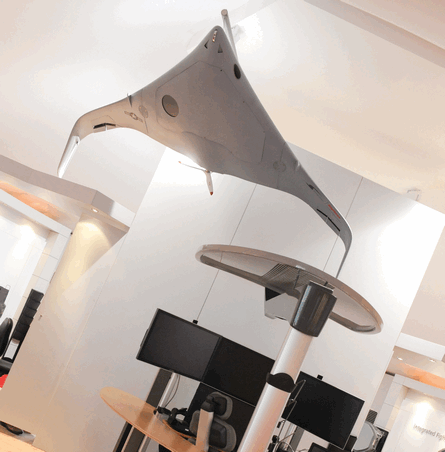Raytheon is showing its KillerBee UAV at the show, designed to answer the US Navy/US Marine Corps requirement for their respective Small Tactical Unmanned Aircraft Systems/Tier 2 missions.
Raytheon has teamed up with Swift Engineering on the project, which aims to provide the services with a UAV with reconnaissance, surveillance and target acquisition capabilities at a typical range of 80-160km (43-86nm) from a ground control station.
A Request for Proposals was issued last March, with contract award anticipated in the first quarter if 2009 and initial operating capability in 2010 for both services. The rapid timescale is made possible by the demand from the US services for mature, non-developmental systems to fit the brief.
 |
|---|
Raytheon and Swift are using a new, heavy fuel motor for the blended wing-body KillerBee. They decline to name the powerplant provider (although Flight International has previously named Beaufort, South Carolina-based XRD in this role).
Heavy-fuel motors are designed both to simplify the logistics chain – the fuel is already used for a wide variety of vehicles – and for safety reasons, being much less flammable than petrol.
The engine will be supercharged, to enable it to achieve 15hp up to the aircraft’s maximum operating altitude of 18,000ft (5,500m), and tests are already under way in the western US. Raytheon and Swift are seeking ruggedness and high mean times between failure as essential qualities in the powerplant.
The sensor package will contain electro-optical and infrared systems, plus a communications relay and a laser rangefinder, with the latter likely to be exchanged for a laser designator later in the UAV’s development.
Source: Flight International



















